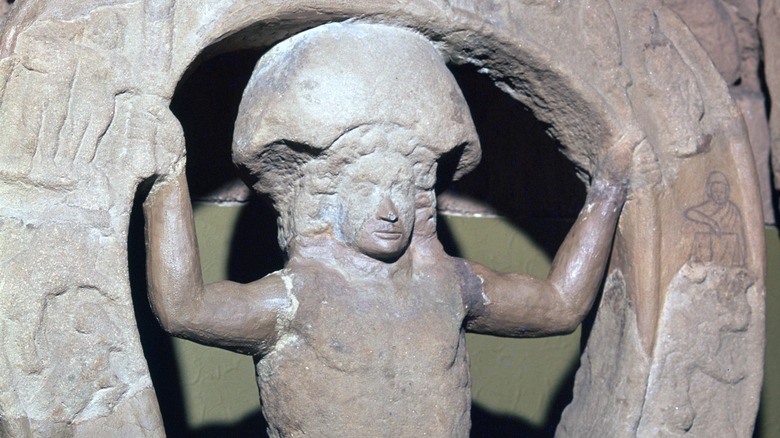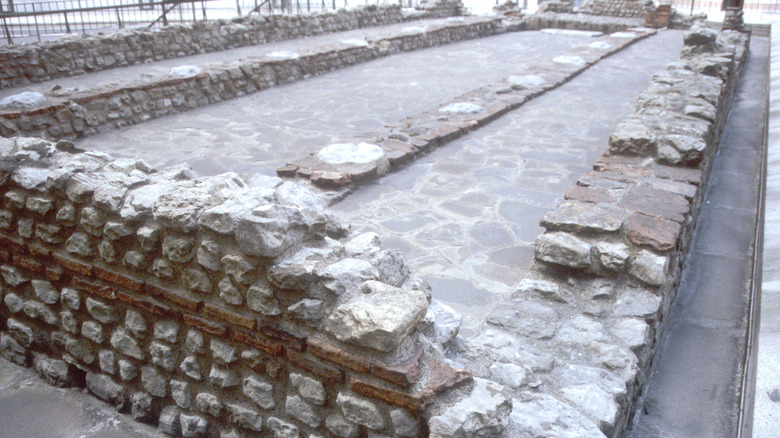The Unsolved Mystery Of This Ancient Roman Jar
The ancient world continues to surprise and baffle modern archaeologists. In 1901, for example, a Roman shipwreck was discovered containing what historians have called the "Antikythera mechanism." It was an incredibly complex mechanical computer made of bronze, and is believed to have been used to map stellar bodies for navigation. In a similarly monumental discovery in 1927, one of Emperor Caligula's long-lost palace ships was located in Lake Nemi, Italy (via HeritageDaily).
By comparison, fragments of a jar from Roman Britain might not seem as captivating. In the case of those found in a World War II London bomb crater, however, some have very much captured archaeological attention. The fragments were sold and transported to the Museum of Ontario Archaeology, where they were meticulously reassembled. The finished object was a large jar with intentionally placed holes surrounding it (via Live Science). The purpose of the vessel has not been definitively determined, though some guesses may be more accurate than others.
The jar may have been used in the worship of Mithras
The most likely explanation is that it had some role in the worship of the god Mithras, a deity inspired by the Persian god of the same name. One of Mithras' temples was close to the jar's excavation site, and many researchers therefore postulated that it was made by the Romans for use in rituals associated with him.
Other researchers and historians, however, believe that the jar was an imported artifact from the even more ancient City of Ur (via Britannica). If that's the case, then it conceals the jar's original purpose behind a further 2,000 years of mystery. Assuming the Romans did build it, there are other more practical theories for its function, including as a lamp (though this is widely disputed), a trap for snakes of certain sizes, and storage for various food items (via Ancient Origins).

